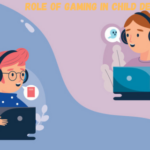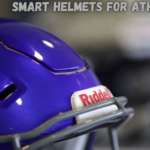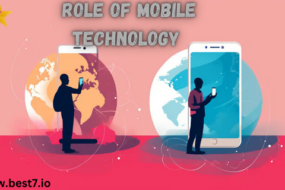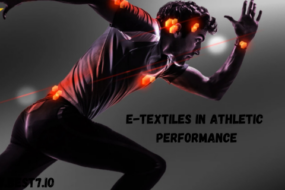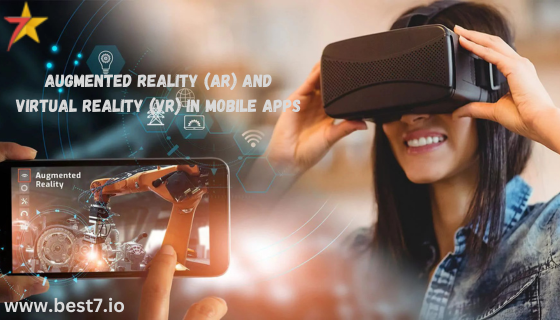
In the fast-paced realm of technology, augmented reality and virtual reality have emerged as two forces for change in the world of mobile applications. The emerging technologies are currently enabling a more captivating user landscape.
Their usage in the mobile app realm is approaching new heights with the current support of a more interactive user experience. As the implementation of the two technologies spreads among mobile applications, an opportunity for creating beautiful experiences that inform and captivate users is emerging.
Applications of AR and VR Across Different Sectors
The implementation of AR and VR in mobile applications within this relatively short period has enabled numerous users to work on products or play games. As a matter of fact, the applications of these technologies span various spheres of app usage.
For example, in the sphere of entertainment, there is a rise in user services through AR and VR apps, in education, such apps are used in distance learning, and in retail, they are integrated into online shopping. According to the financial forecast, the AR and VR market will constitute close to $300 billion worldwide before 2025. This illustrates the profound impact of the digital revolution and innovation on the mobile app’s future.
Augmented Reality’s Role in Enhancing User Experience
Considering that AR can capture users’ experiences with their physical surroundings through digital overlays, there are numerous examples of its implementation. For example, the AR app Pokémon GO captured the world’s imagination in 2016 and has garnered over $6 billion in profits. The app is a prime example of how AR technology can entertain and inform users while offering a unique way of experiencing games.
AR in Education: A New Era of Interactive Learning
Augmented reality technology is being applied in the field of education to provide interactive learning opportunities. There are several educational AR apps that help display academic concepts in a more engaging manner for students.
A significant example of such an application is Google Expeditions. Using this program, users may experience virtual trips to historical places or other locations, such as the solar system, where people cannot physically go.
Research conducted in collaboration with the University of Maryland showed that students using AR education tools scored 34% higher in assessments compared to a control group, suggesting AR as an effective educational tool.
Virtual Reality: Immersive Experiences in Medicine and Travel
On the other hand, virtual reality technology creates fully immersive environments, placing users in completely different surroundings. Using special headsets in conjunction with mobile devices, VR apps allow users to experience scenarios that replicate real-life situations. In medicine, VR is used for training professionals and for healing purposes.
For instance, VR simulations are used to train surgeons on complex surgeries, allowing them to develop critical skills without risking a patient’s safety. A study published by The Journal of Medical Education showed that surgical residents trained with VR experienced a 50% improvement in their skills compared to a control group.
VR is also transforming travel, as customers use VR tours to help choose tours beforehand, with research from American Express Global Business Travel showing 68% of tourists are more willing to book after taking a VR tour.
Augmented Reality in Retail: Shaping Consumer Behavior
In retail, augmented reality offers exciting new opportunities for consumers to interact with products. Retailers are increasingly incorporating AR technologies to create interactive shopping experiences. A prime example is the IKEA Place app, which allows users to see how furniture will look in their homes before purchasing.
By using AR to give an accurate representation of their products, retailers gain significant advantages in user engagement and reduced product returns. Research from Harvard Business Review shows that AR in retail can increase sales by 40%, further proving its influence on customer behavior.
AR and VR Revolutionizing Marketing Strategies
In the context of marketing strategies, with the emergence of AR and VR technologies, they are changing as well. More and more companies are employing these technologies to create immersive memorable marketing campaigns.
For instance, Nike used AR and VR technologies in its “Nike by You” campaign where the customers were able to customize their shoes. Naturally, this kind of marketing effort cannot be left unnoticed by the customer and, in the majority of cases, causes positive emotions, which means increased brand loyalty.
What is more, a Nielsen report shows that 51% of consumers say they would be more loyal to the brand because it allows them to interact in their marketing efforts. This stat shows the high efficiency of AR and VR in marketing.
The Growing Demand for AR and VR in Mobile App Development
When it comes to mobile applications, the developers’ competition for the users’ attention is becoming increasingly fierce. Key indicators, taking into account which application the user will download and use, are the level of user-friendliness of the application and the user’s engagement.
An impressive 49% of smartphone users reported they use shopping apps they perceive as user-friendly. Naturally, the need to find new ways of engaging the user with the application and ensuring its user-friendliness pushes app developers to embrace immersive AR and VR technologies. Deloitte’s study reports that apps employing immersive experience in their work have a 70% higher rate of user engagement.
Future Trends: AR and VR in Mobile Payments and Healthcare
Additionally, the impact of technology trends is important. As the preferences of consumers change, in the future, the demand for new features associated with the use of a variety of technologies to improve user experience is expected to increase.
Thus, in the near future, it may be assumed that AR and VR technologies would be at the forefront for mobile application developers. As App Annie’s survey showed, 61% of application developers plan to include AR or VR in their applications in the next year. The report also indicates that, presently, a growing number of healthcare companies are already utilizing AR and VR for all stages. Except for training of the medical staff, these technologies are also used for the rehabilitation and therapy of the patients.
Virtual rehabilitation represents numerous advantages in comparison to the ordinary ways of rehabilitation exercises. Patients will be able to perform the exercises in the environment where they can control and predict the certain movements.
The study published in the Journal of Neuro Engineering and Rehabilitation showed that the recovery rate of the patients increased by 30%. Therefore, in the future, AR and VR technologies will allow the improvement of the rehabilitation of patients and enhance the recovery rate.
Investment in AR and VR is Shaping the Future of Mobile Technology
Firstly, the trends on the use of technology exhibit that in the future more and more technologies focused on the use of mobile payments will include AR and VR. Thus, as to AR technology, developers can create the application that will allow users to see the prices of any product through their smartphone camera. In addition, the technology will allow observing which common goods included in the app are also sold at discount.
Therefore, the shopping will become more interesting and will benefit the purchasing possibilities. Through the use of this type of mobile payment, banking will also become easier since people will be able to monitor exactly how much money they have without asking the persons nearby to observe the purchases. According to the report by Markets and Markets, the mobile payment market size is estimated to grow from USD 3.4 trillion in 2020, to USD 6.1 trillion by 2023.
Conclusion: The All-Encompassing Impact of AR and VR on Mobile Applications
The future of mobile technology is closely related to the development of AR and VR. With the continuous improvement of these technologies, people will be able to have access to applications, which enrich their user experience to a great extent. Special specialists integrate artificial intelligence and machine learning into AR and VR to provide users with a more personalized interaction.
As the International Data Corporation highlights, “worldwide spending on AR and VR is expected to reach more than $200 billion by 2025”. Consequently, more and more money is invested in the creation of these systems to ensure their development and broad usage in mobile applications in the future. Overall, the influence of augmented reality and virtual reality on mobile applications is deep and all-encompassing.
These technologies provide users with great opportunities fostering their experience, engagement, and innovations in a number of spheres. With the development of AR and VR, even more fields will be supported, and users will interact with mobile applications in new ways. Such investment will thoroughly change the way organizations operate. At the same time, they will help users by attracting their attention and making them satisfied with their services or products.





